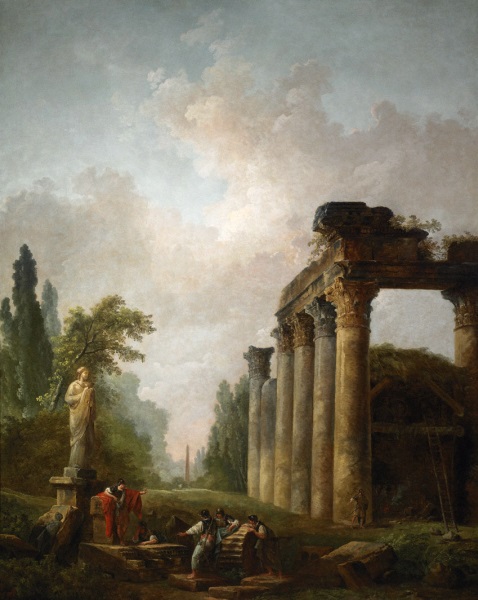Hubert Robert, The Ruin, 1789

The Work
In this imaginary scene, the colonnade of an important building is all that remains of it. Several men, who may be soldiers because of their helmets, are leaning over a piece of broken column. Another man, with a red cape, is speaking to them beneath the sculpture of an unknown goddess. On the right, a ladder shows that the temple is now used as a dwelling or a barn. In the distance, we see a classical obelisk.
Historical Moment
In Europe during the 17th and 18th centuries, an important part of a wealthy young man’s education was a trip to Italy, called "the Grand Tour." It was believed that seeing historic sites from classical antiquity, especially in the city of Rome, would have a positive influence on his taste and his morals. Classical ruins were the subject of admiration, but were also a reminder that the Roman Empire had fallen, in spite of its former greatness.
The Genre
Many French and Italian artists made paintings and engravings, sometimes embellished by their imagination, to sell as travel souvenirs. It was very fashionable, especially in England, for noblemen to have paintings of ancient ruins. In addition, they enjoyed decorating the gardens of their estates with statues and architectural fragments that they had purchased during their own "Grand Tour."
The Artist
Hubert Robert (1733-1808) anticipated romanticism in his works. The luminous atmosphere in his paintings evokes the sublime. His preference for the subject of antique ruins earned him the nickname of "Robert of the Ruins."

